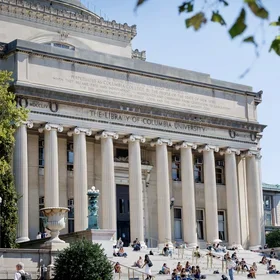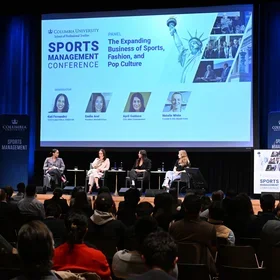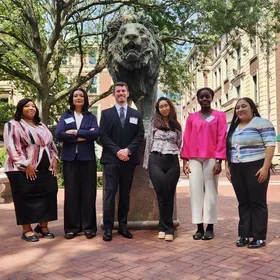History professor Cathleen Cahill, Ph.D. kicked off the SPS Election 2020 Speaker Series on Sept. 17 with a look at the diverse individuals and coalitions that pushed for an expansion of voter rights in the United States.
Eight years before the 19th Amendment, a Barnard College student from Guangzhou, China named Mabel Ping-Hua Lee helped to lead a parade of thousands of women on 5th Avenue in New York City demanding the right to vote. Though U.S. law wouldn’t allow a path for naturalization for her, Lee — who went on to earn a Ph.D. in economics from Columbia University — fervently advocated for women’s suffrage in the United States, drawing inspiration from the rights that Chinese women gained when the Republic of China was established that year.
Marking the centennial of women’s suffrage in the U.S., guest speaker Cathleen Cahill, Ph.D. shared her findings on the influence of women of color as well as socio-political events on the movement, including the Cherokee Removal of the 1830s, 1911 Chinese Revolution and U.S. abolitionism and the resulting Reconstruction Amendments.
“When you ask most people what a suffragist was or who they could name, they might be able to name a couple of the major figures like Susan B. Anthony or Elizabeth Cady Stanton,” said Cathleen Cahill, Ph.D. In her lecture, however, the Penn State history professor argued that advocates like Mabel Ping-Hua Lee, Frances Ellen Watkins Harper, Anna Julia Cooper and even Frederick Douglass should also be recognized for their roles in pushing for voter rights expansions in the United States.
The story of suffragist Mabel Ping-Hua Lee, in particular, she said, “reveals some of the unexpected suffrage stories that we find when we start looking into the stories of women of color.” Observing the early expansion of Chinese women’s rights during the Revolution of 1911, white American suffragists co-opted the political moment to advocate for women’s suffrage in the U.S. Anna Howard Shaw, president of the National American Woman Suffrage Association, also participated in the 1912 women’s march on 5th Avenue, holding up a banner that read “Catching Up with China.” Other suffragists held signs and bought newspaper ads with slogans such as “Our Sisters in China are Free” and “Light from China.”
And even as far back as the 1830s, white American suffragists adopted methods they saw among Cherokee women. During the Cherokee Removal, which forced Cherokee people out of their homelands in North Carolina and Georgia to Oklahoma, Cherokee women were petitioning their tribal councils and holding “massive petition drives advocating in favor of the Cherokee maintaining their homelands,” Cahill said. “White missionary women sort of spread this idea up to Northern women... this again was sort of the first time that large numbers of white women had this experience of using a petition to make their political voice heard.”
Despite receiving early support for women’s voting rights from prominent African-American abolitionists like Frederick Douglass and Frances Ellen Watkins Harper, Elizabeth Cady Stanton and others withheld their support for intersectional laws that protected Americans on the basis of gender and race. The prominence of anti-Black racism in the U.S. forced African-Americans and women of color to advocate for the rights of their own racial groups. More than half a century would pass before African-American women and men in the South would actually be able to vote without the threat of arrest or state-sanctioned violence. In a speech delivered at an 1866 women's convention headlining Elizabeth Cady Stanton and Susan B. Anthony, Harper famously said, "We are all bound up together in one great bundle of humanity... Society cannot afford to neglect the enlightenment of any class of its members."
In her forthcoming book "Recasting the Vote: How Women of Color Transformed the Suffrage Movement," Cahill provides a historical review of when various groups were allowed to vote in the U.S. and how they achieved the right.


